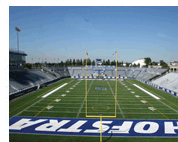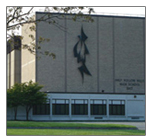Football Teammates Became Wild West BudsApr 18, 2022Posted by james
The University of Southern California won its first college football national championship during 1928. The Trojan’s success during previous seasons, partly attributed to the big uglies in the gridiron trenches, helped prep USC for that championship season. ”Uglies” had become a term used with affection. By chance, a couple of those trench teammates, following their college football careers, became Hollywood stars.
When John Ford was seeking talent for his 1929 football film “Salute” that centered around the Army-Navy rivalry, the director decided to cast some of the “uglies” as Midshipmen. “Get me that one with the ugly face,” Ford reportedly said as he gestured toward one player who was given the role of Midshipman Harold. A teammate and close friend of the handpicked player worked as a prop boy and uncredited extra for the film. The two players remained close friends for life and together they became huge talents on the big and small screens.
Midshipman Harold’s actual name was Ward Bond. His friend the prop guy was Marion Morrison, better known as John Wayne. They worked together with John Ford again on the film “Stagecoach” and often teamed on other western films.
While John would become an icon on the screen, Ward settled into a prosperous career as a stuntman, toughie, baddie, or ugly. He estimated that he played these roles in about 150 films. During the late 1950s, after two decades of sensational supporting work, Ward finally received a leading role in television’s “Wagon Train.”
Ward died suddenly after only a few years starring in the role as the wagon master on that show. His loss impacted everyone in the business, including his former USC teammate. Their friendship was deep. In his will, as a way to tweak John for his masterful handling of guns in all those westerns, Ward left “The Duke” the shotgun that the star had accidently fired during a hunting trip. With that shotgun, John had injured his friend, one of USC’s top Uglies.









